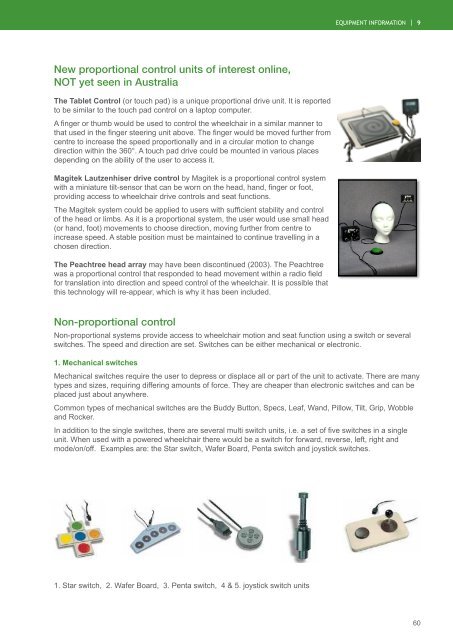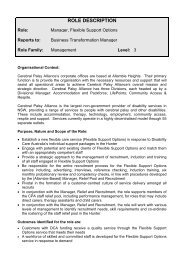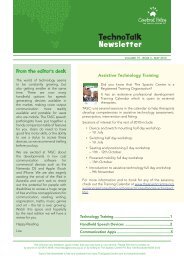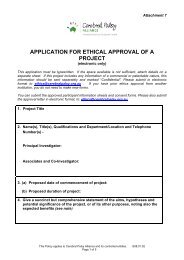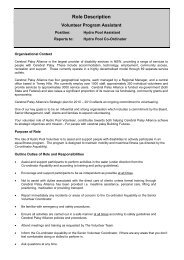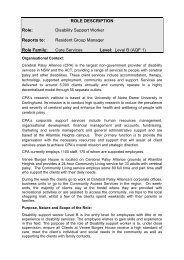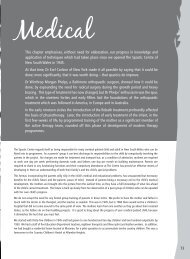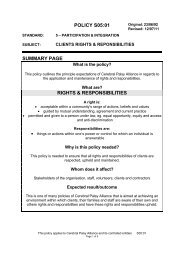Powered Mobility Manual - Cerebral Palsy Alliance
Powered Mobility Manual - Cerebral Palsy Alliance
Powered Mobility Manual - Cerebral Palsy Alliance
- No tags were found...
You also want an ePaper? Increase the reach of your titles
YUMPU automatically turns print PDFs into web optimized ePapers that Google loves.
equipment information | 9New proportional control units of interest online,NOT yet seen in AustraliaThe Tablet Control (or touch pad) is a unique proportional drive unit. It is reportedto be similar to the touch pad control on a laptop computer.A finger or thumb would be used to control the wheelchair in a similar manner tothat used in the finger steering unit above. The finger would be moved further fromcentre to increase the speed proportionally and in a circular motion to changedirection within the 360°. A touch pad drive could be mounted in various placesdepending on the ability of the user to access it.Magitek Lautzenhiser drive control by Magitek is a proportional control systemwith a miniature tilt-sensor that can be worn on the head, hand, finger or foot,providing access to wheelchair drive controls and seat functions.The Magitek system could be applied to users with sufficient stability and controlof the head or limbs. As it is a proportional system, the user would use small head(or hand, foot) movements to choose direction, moving further from centre toincrease speed. A stable position must be maintained to continue travelling in achosen direction.The Peachtree head array may have been discontinued (2003). The Peachtreewas a proportional control that responded to head movement within a radio fieldfor translation into direction and speed control of the wheelchair. It is possible thatthis technology will re-appear, which is why it has been included.Non-proportional controlNon-proportional systems provide access to wheelchair motion and seat function using a switch or severalswitches. The speed and direction are set. Switches can be either mechanical or electronic.1. Mechanical switchesMechanical switches require the user to depress or displace all or part of the unit to activate. There are manytypes and sizes, requiring differing amounts of force. They are cheaper than electronic switches and can beplaced just about anywhere.Common types of mechanical switches are the Buddy Button, Specs, Leaf, Wand, Pillow, Tilt, Grip, Wobbleand Rocker.In addition to the single switches, there are several multi switch units, i.e. a set of five switches in a singleunit. When used with a powered wheelchair there would be a switch for forward, reverse, left, right andmode/on/off. Examples are: the Star switch, Wafer Board, Penta switch and joystick switches.1. Star switch, 2. Wafer Board, 3. Penta switch, 4 & 5. joystick switch units60


